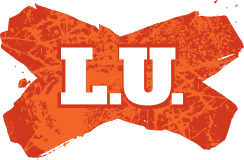TV networks rely on sports to battle fragmented ad market
Sports broadcasts such as the AFL deliver huge audiences and come with huge price tags the AFL wants about $1.75 billion and the NRL wants more than $1.2 billion.
Sports broadcasts such as the AFL deliver huge audiences and come with huge price tags the AFL wants about $1.75 billion and the NRL wants more than $1.2 billion. Photo: Getty Images
Major sports rights are even more critical to the fortune of free-to-air television networks, as they battle in a fragmenting market, because the broadcasts are the only guarantee of large audiences, media buyers say.
The buyers, who act for advertisers, have stressed the importance of the upcoming AFL and NRL broadcast negotiations in the wake of Nine Entertainment Co's downgrade to profit guidance late on Friday, which the broadcaster blamed on a softer than expected advertising market.
Nine's shares plunged 16.1 per cent to $1.665 on Tuesday and sparked a sector-wide slump, due to investors fearing the issue may be widespread.
Shares in rival Seven West Media took an 11.4 per cent hit and finished up at $1.05, while Fairfax Media, publisher of BusinessDay and The Australian Financial Review, dropped 2.1 per cent to 93¢.
Advertisement
Ten Network Holdings, which is in discussions with Foxtel around the pay TV provider taking a 14.9 per cent stake in the company, bucked the trend by adding 2.1 per cent to 24.5¢.
Bank of America Merrill Lynch analyst David Kaynes is forecasting free-to-air TV's share of total advertising will fall to 28 per cent this financial year, down from 35 per cent in 2004.
"We are increasingly concerned that free-to-air TV could be on the verge of a newspaper-style decline in advertising percentage share halved over past five years," Mr Kaynes said.
"Complicating this issue is the rapidly expanding range of alternative video content."
Nine group sales and marketing director Peter Wiltshire said there were a number of reasons for the downgrade, including shifting of programming, marketers' budgets closing up until the end of the financial year and online catch-up viewing not yet being included in ratings.
"I think that when we do get that measurement to deliver a TV rating equivalent in online video, you'll start to see there's a quite a bit of viewing behaviour happening in the online environment for broadcast properties," Mr Wiltshire said.
Mr Wiltshire said he expected ratings boost in the second half of the year with the Ashes and The Voice to be broadcast.
Seven moved to quell fears on Tuesday that it would follow suit, reaffirming its profit guidance on Tuesday afternoon.
"The demand for key franchise programming is stronger than in the prior year and the market response to our Olympic sponsorship packages has been very positive," Seven said in a statement.
Starcom MediaVest Group chief executive Chris Nolan said that while forecasting a reduction in the free-to-air advertising market for the rest of the financial year and into next, the overall advertising market is projected to increase.
Spinach Advertising general manager Ben Willee said the proliferation of other forms of media was affecting television viewing and therefore advertising revenue.
"We're all sitting in front of the TV with an iPad, a laptop and a phone, watching videos, checking websites, browsing Facebook and Twitter that's having an effect on total viewing," Mr Willee said.
"There is a sense in our business that the market is growing and it's growing because there's so much other stuff going on. There's a requirement to make content, to do pre-roll video, to advertise on the internet, to have an email program, to fuel the beast that is far bigger than it used to be, so there's still a lot of work."
The NRL and AFL are gearing up for broadcast negotiations and the expectation is that they will both secure more than their current deals, which are split between free-to-air, Foxtel and Telstra. The AFL is believed to be looking to get about $1.75 billion, while the NRL will aim for more than its current $1.2 billion deal.
Sport, which is already critical, becomes even more important, in the current audience and advertising market, Mr Nolan said.
"[Sport], and the audience that they generate, becomes a higher total proportion of the overall mix," Mr Nolan said.
"We've seen evidence in the past, sports rights provide direct sources of audiences and then advertising revenue, but they also allow the broadcasters that have them to use them as leverage for overall advertising expenditure."
OMD chief executive Peter Horgan said that while traditional TV was holding up surprisingly well in revenue terms, there are a lot of structural headwinds in an increasingly busy audio-visual market with the entrance of Netflix, Stan, a joint-venture between Nine and Fairfax, and Presto, a joint-venture between Seven and Foxtel.
Mr Horgan said subscription streaming services, which are currently not ad-funded, look begin to access the option because they will be able to target audiences effectively.
"In the digital IP enable ecosystem, the big networks go from being one of three or four to being one of many. That, on the face of it, looks quite tough," Mr Horgan said.
"The flip side is you look to markets like the US which is a couple of months ahead in the distribution of content stakes, and the linear TV operators still seem to be in pretty good health."
Despite sports rights becoming more expensive and tough to secure they remain one of the few commodities than can attract a mass audience.
"People who have large clusters of audience when the propensity to ad skip is almost nil is incredibly powerful for a network and allows them to promote their other content. It's such an important part of their armoury," Mr Horgan said.
http://www.smh.com.au/business/medi...tle-fragmented-ad-market-20150609-ghjx0u.html
